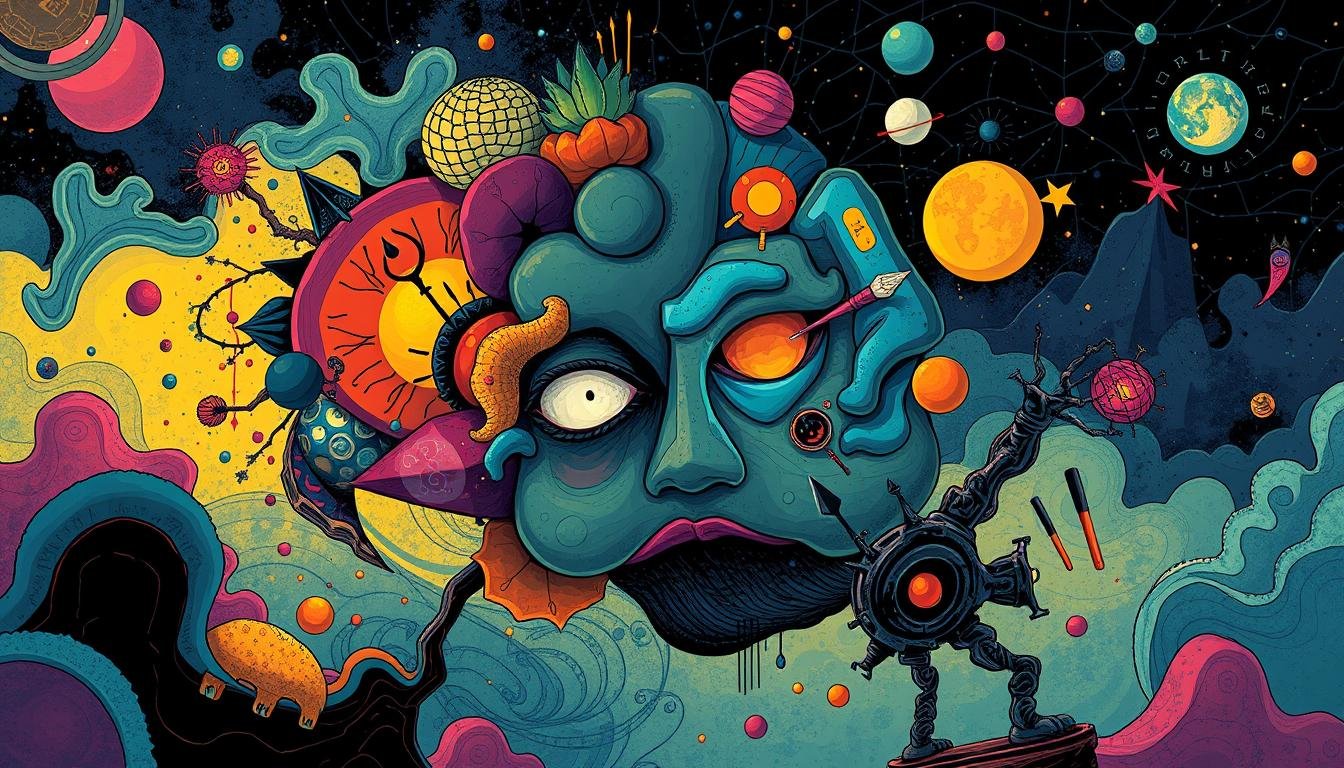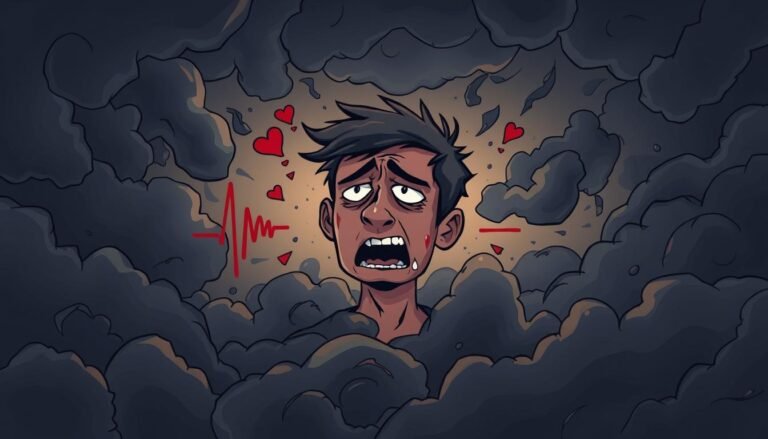Understanding Schizophrenia: Symptoms and Support
Have you ever wondered what it’s like to live in a world where reality blends with imagination? For those with schizophrenia, this isn’t just a thought experiment – it’s their daily reality.
Schizophrenia, a complex mental health condition, affects about 1 in 100 people. It’s a disorder that can dramatically alter a person’s perception, thoughts, and behaviors. While often misunderstood, schizophrenia is far more than just “hearing voices” or having “split personalities.”
This condition typically emerges between ages 16 and 30, with the first episode of psychosis marking its onset. Before this, subtle changes in thinking, mood, and social functioning may occur. Symptoms can range from hallucinations and delusions to lack of motivation and cognitive impairments.
Early diagnosis and treatment are crucial in managing schizophrenia. With proper care, many individuals with this condition lead fulfilling lives. Let’s delve deeper into understanding schizophrenia, its symptoms, and the support available for those affected.
What is Schizophrenia?
Schizophrenia is a complex mental health condition affecting about 1% of the U.S. population. It impacts a person’s thoughts, feelings, and behaviors. People with schizophrenia often lose touch with reality, experiencing psychosis.
Definition and Prevalence
Schizophrenia is marked by symptoms like delusions, hallucinations, and cognitive impairment. It affects both men and women equally, though men often show symptoms earlier. Worldwide, schizophrenia affects about 24 million people, or 1 in 300 individuals.
Onset and Development
Schizophrenia usually starts in late teens or early adulthood. Men often see the first signs in their late teens or early 20s. Women may notice symptoms in their 20s and early 30s. The condition develops gradually, with early signs including sleep, emotion, and cognitive changes.
Common Misconceptions
Despite common beliefs, schizophrenia does not mean split personality. There’s no strong link between schizophrenia and violent behavior. These myths can cause stigma and discrimination. In reality, people with schizophrenia often face social exclusion and human rights violations.
“At least one-third of individuals with schizophrenia can experience complete remission of symptoms, while others may face periods of symptom exacerbation and remission throughout their lives.”
Early treatment and support are key in managing schizophrenia. With the right care, many individuals can lead fulfilling lives despite the challenges.
Symptoms of Schizophrenia
Schizophrenia shows up in many ways, affecting daily life a lot. It’s split into three main types: positive, negative, and cognitive symptoms.
Positive Symptoms
Positive symptoms are when people experience things that aren’t real. Hearing voices that aren’t there is common. False beliefs, or delusions, are also big signs. Confused speech comes from disorganized thinking.
Negative Symptoms
Negative symptoms are when people don’t do things they normally would. They might show less emotion, feel unmotivated, or pull away from others. Poor hygiene and sleep problems are also signs. These can start months or years before the symptoms get worse.
Cognitive Symptoms
Cognitive symptoms mess with how well people think. They might have trouble remembering things, focusing, or making decisions. Learning new stuff is hard too. These problems make everyday tasks tough.
| Symptom Type | Examples | Impact |
|---|---|---|
| Positive | Hallucinations, delusions, disorganized thinking | Distorts reality perception |
| Negative | Reduced emotion, low motivation, social withdrawal | Diminishes normal behaviors |
| Cognitive | Memory issues, poor concentration, impaired decision-making | Affects mental functioning |
It’s key to remember that everyone’s symptoms are different. Catching it early and treating it right can help manage these issues.
Causes and Risk Factors
Schizophrenia comes from a mix of genetics, brain chemistry, and environment. The exact cause is still a mystery. But, researchers have found important factors that contribute to it.
Genetics are a big part of schizophrenia. If you have a family member with it, your risk goes up by seven to eight times. If you have two family members, your risk is eleven times higher. Twin studies show that if one twin has schizophrenia, the other has an 81% chance too.
Brain chemistry is also key. Imbalances in neurotransmitters like dopamine play a big role. The dopamine hypothesis says too much dopamine in certain areas leads to symptoms like hallucinations.
Environment also affects schizophrenia risk. Viruses during pregnancy, crowded living, and childhood stress can trigger it. Also, using cannabis in your teens or early twenties can raise your risk later.
| Risk Factor | Impact |
|---|---|
| Close relative with schizophrenia | 7-8 times higher risk |
| Two close relatives with schizophrenia | 11 times higher risk |
| Identical twin with schizophrenia | 81% risk |
| General population risk | Slightly less than 1% |
Knowing these causes and risk factors helps in treating schizophrenia better. It’s important for early help and better treatment plans.
Diagnosis and Assessment
Diagnosing schizophrenia is a detailed process. Mental health experts use the DSM-5 criteria to check symptoms. This helps in starting treatment early.
Diagnostic Criteria
The DSM-5 says a person must show two specific symptoms for a month. These can be delusions, hallucinations, or disorganized speech. Doctors also do physical exams to rule out other health issues.
The Role of Mental Health Professionals
Psychiatrists are key in diagnosing schizophrenia. They do detailed checks and use special lists. Community Mental Health Teams also help those with complex needs. In serious cases, the Mental Health Act might be used for treatment.
Early Detection and Intervention
Spotting the early signs is important. This stage might show small changes in behavior and thinking. Starting treatment early can greatly improve outcomes. Experts quickly refer young people to mental health services.
| Aspect | Details |
|---|---|
| Prevalence | 1% of general population |
| Onset Age (Men) | Late teens to early 20s |
| Onset Age (Women) | Late 20s to early 30s |
| Genetic Risk (First-degree relatives) | 10% chance of developing |
Early detection and proper diagnosis are key in managing schizophrenia. With the right support and treatment, people can live fulfilling lives despite the challenges.
Treatment Options for Schizophrenia
Schizophrenia treatment combines antipsychotic medications and psychosocial treatments. These methods help manage symptoms and improve life quality. About 1 in 100 people will get schizophrenia, usually between 15 and 35 years old.
Antipsychotic medications are key for handling symptoms like hallucinations and delusions. There are two types: typical antipsychotics from the 1950s and atypical ones from the 1990s. Most people take these for 1-2 years after their first episode to prevent more.
Psychosocial treatments add to medication. Cognitive behavioral therapy helps patients deal with symptoms and function better. Family education and support groups are also helpful. For first-episode psychosis, coordinated specialty care offers a team-based treatment plan.
| Treatment Type | Description | Benefits |
|---|---|---|
| Antipsychotic Medications | Regulate neurotransmitter activity | Manage positive symptoms |
| Cognitive Behavioral Therapy | Talk therapy focusing on thought patterns | Improve coping skills |
| Coordinated Specialty Care | Team-based, comprehensive approach | Early intervention for first-episode psychosis |
Community mental health teams manage schizophrenia treatment. These teams include social workers, nurses, therapists, and psychiatrists. For complex cases, a care programme approach provides tailored, ongoing support. With the right treatment and support, many people with schizophrenia can live fulfilling lives.
Conclusion
Schizophrenia affects about 0.3% to 0.7% of people worldwide. It’s a chronic condition, but effective management can lead to big improvements. Early diagnosis is crucial, as 80% to 90% of patients show signs before being formally diagnosed.
Symptoms often start between ages 16 and 30. They impact thinking, emotions, and behavior. This makes it hard for people to live their lives as they normally would.
Recovery is possible with the right support. Antipsychotic drugs help many, but about 30% may not respond well. That’s why a mix of treatments, including psychotherapy and social support, is crucial.
Mental health awareness is key in reducing stigma. It ensures timely care for those affected. This awareness helps people get the help they need without fear of judgment.
Research is ongoing to better understand schizophrenia. We now know genetics and environmental triggers play a role. With proper care, many people with schizophrenia can achieve their goals.
Supporting loved ones is important. Listen without judgment and learn about the condition. This can make a big difference in their journey to recovery.
Source Links
- Schizophrenia
- Schizophrenia Explained: The Signs, Symptoms, and Treatment
- Schizophrenia – Symptoms and causes
- What is Schizophrenia?
- Schizophrenia
- Overview – Schizophrenia
- Symptoms – Schizophrenia
- Schizophrenia Symptoms: Positive and Negative Symptoms Explained
- Schizophrenia Explained: The Signs, Symptoms, and Treatment
- Causes and Risk Factors of Schizophrenia
- Causes – Schizophrenia
- Schizophrenia – Diagnosis and treatment
- Diagnosis – Schizophrenia
- Diagnosing Schizophrenia
- Schizophrenia
- Treatment – Schizophrenia
- Jumping to conclusions in schizophrenia
- Paranoid schizophrenia: What it is, symptoms, and more
- Conclusion








